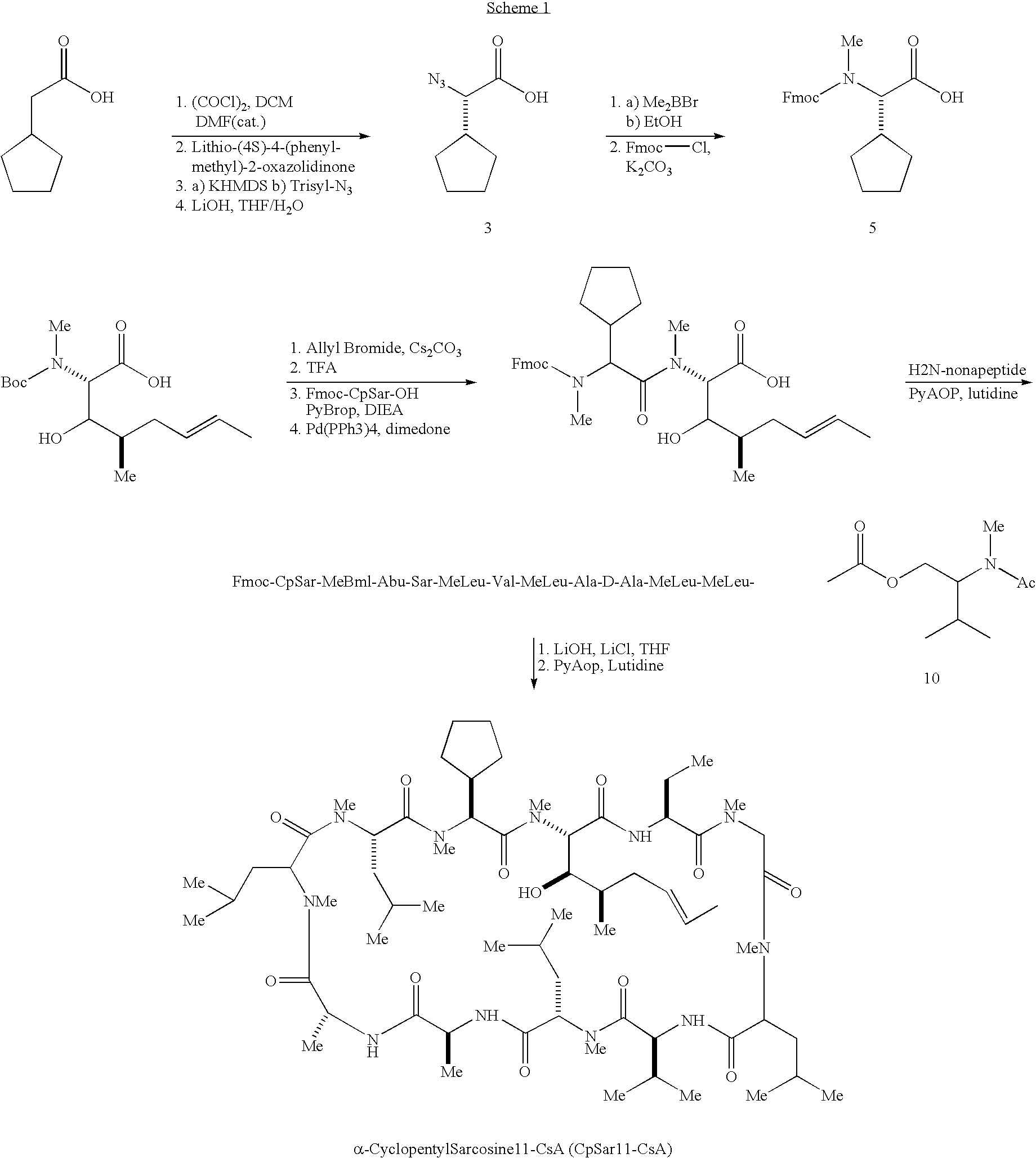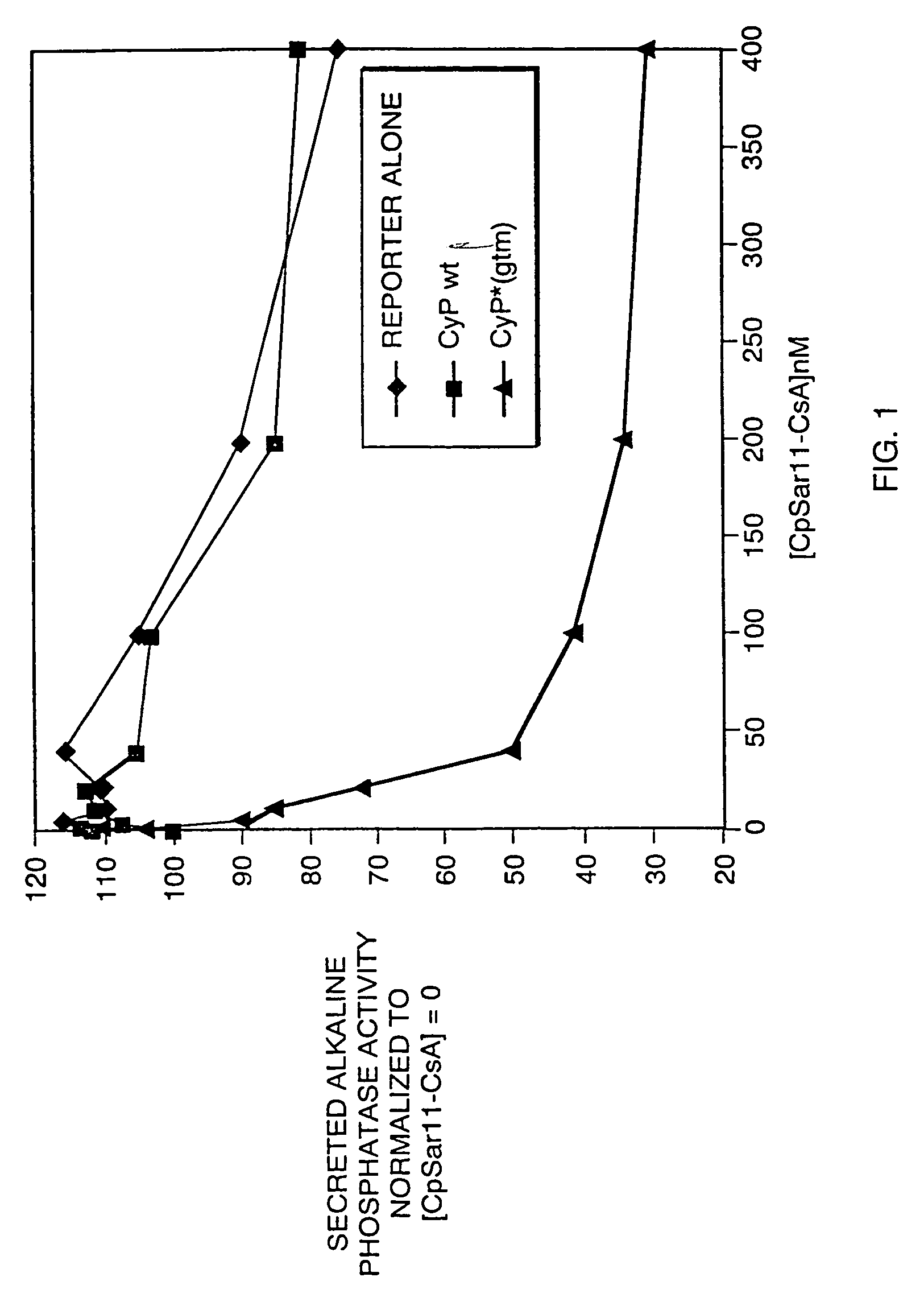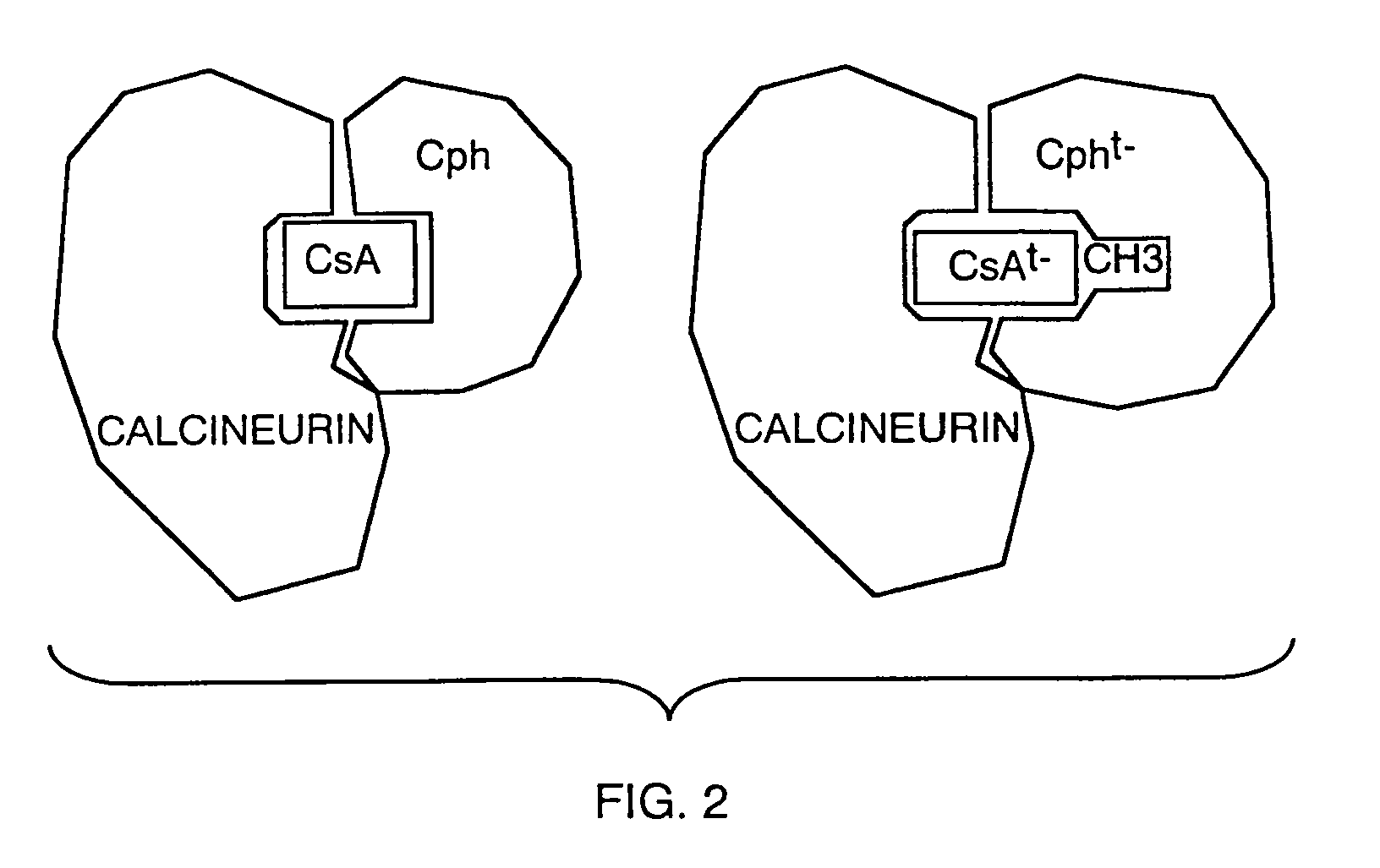Gene therapy by cell specific targeting
- Summary
- Abstract
- Description
- Claims
- Application Information
AI Technical Summary
Benefits of technology
Problems solved by technology
Method used
Image
Examples
example 1
Synthesis of a modified Cyclosporin A, CpSar11-CsA
[0189]This Example describes the synthesis of a modified form of Cyclosporin A, termed CpSar11-CsA, which does not significantly interact with the wild-type receptor of cyclosporin A, cyclophilin.
[0190]As shown below in Scheme 1, the synthesis of CpSar11-CsA first required the asymmetric synthesis of alpha-cyclopentyl sarcosine using a combination of the methods of Evans, et al. (J. Am. Chem. Soc. 112: 4011–4030 (1990)) and Dorow, et al. (J. Org. Chem. 60: 4986–7 (1995)) and the subsequent incorporation of this unnatural amino acid into the CsA macrocycle.
[0191]In the synthesis, HZN-nonapeptied (H2N-Abu-Sar-MeLeu-Val-MeLeu-Ala-DAlaMeleu-MeLeu-(Ac-N-MeValinol ester)), SEQ ID NO: 1, was synthesized from CsA. The reagent abbreviations include the following: DCM, dichloromethane; DMF, dimethylformamide; KHMDS, potassium hexamethyldisilazide; Trisyl-N3, triisopropylbenzenesulfonylazide; THF, tetrahydrofuran; Fmoc-CL, 9-fluorenylmethylchl...
example 2
Interaction of a Modified Cyclosporin A with a Modified Cyclophilin Induces Gene Activation Selectively in Cells Expressing the Modified Cyclophilin
[0208]This Example shows that the modified cyclosporin A, CpSar11-CsA, interacts specifically with a modified cyclophilin, CypAgtm, to induce cyclophilin-dependent gene activation.
[0209]A modified cyclophilin having the capability to interact with CpSar11-CsA was designed based on the crystal structure of cyclophilin, CypA, and CsA. The crystal structure of the CypA-CsA complex shows that residue 11 of CsA directly contacts Cyp, binding in a deep hydrophobic pocket in the active site of cyclophilin. (See Pflugl, G., et al, Nature 361:91–4 (1993) and Ke, H., et al, Structure 2:33–44 (1994).) It was reasoned that the addition of atoms at that site should significantly reduce the binding of CpSar11-CsA to CypA, presumably through steric interaction between the side chain of CpSar11 and CypA. To select possible receptors capable of binding C...
example 3
Other Exemplary Modified Cyclophilins and FK506 Molecules which Mediate Gene Activation by Selective Interaction with Modified Receptors
[0217]This Example describes additional modified cyclosporin and FK506 molecules which selectively interact with a modified cyclophilin and are capable of inducing NF-AT mediated gene transcription.
[0218]Altered cyclosporin molecules unable to bind to cyclophilins by virtue of a methyl group at the 11 position of the peptide ring or in another chemical strategy a cyclopentyl sarcosine CsA, were prepared. These molecules, generically referred to as CsAt− after the fact that they are unable to combine with the wild-type cyclophilin to block the activity of calcineurin, are non-toxic and not immunosuppressive in normal cells or whole animals. An engineered cyclophilin molecule binding specifically to these modified cyclosporin and FK506 molecules was prepared. This modified cyclophilin contained mutations of F 113G and S99T, which create a “hole” to ac...
PUM
| Property | Measurement | Unit |
|---|---|---|
| Dissociation constant | aaaaa | aaaaa |
Abstract
Description
Claims
Application Information
 Login to View More
Login to View More - R&D
- Intellectual Property
- Life Sciences
- Materials
- Tech Scout
- Unparalleled Data Quality
- Higher Quality Content
- 60% Fewer Hallucinations
Browse by: Latest US Patents, China's latest patents, Technical Efficacy Thesaurus, Application Domain, Technology Topic, Popular Technical Reports.
© 2025 PatSnap. All rights reserved.Legal|Privacy policy|Modern Slavery Act Transparency Statement|Sitemap|About US| Contact US: help@patsnap.com



